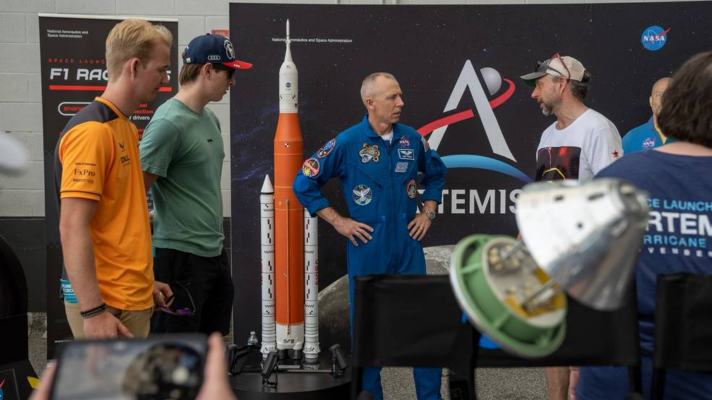NASA went to the Miami Grand Prix this weekend to give racegoers a chance to learn more about the Artemis program and the physics of rockets and racecars. NASA astronaut Drew Feustel and Marshall Space Flight Center employees walked guests through an exhibit featuring the space agency’s new Moon rocket, Space Launch System.

NASA’s Space Launch System launched for the first time in November of 2022, for the Artemis I mission. Future missions of the Artemis program will launch astronauts to the Moon in the Orion spacecraft onboard SLS.
The Miami Grand Prix, a Formula 1 race event, provided NASA the perfect opportunity to reach current and future spaceflight enthusiasts among racing fans.

Like racecars, rockets are designed to go fast, and their speed is achieved through the basic principles of physics combined with design and engineering. From engines to steering, both machines are built to maximize the power generated by their engines, and then that force is directed to achieve top speeds.
RELATED: NASA, NASCAR, and Carbon Monoxide Poisoning
Held for the first time in 2022, the Miami Grand Prix takes place at the Miami International Autodrome.
NASA astronaut Drew Feustel is an avid motorsports fan and often discusses the similarities between driving racecars and launching rockets. During his last space mission, Expedition 55/56, Feustel gave racing fans a unique view of racetracks when he captured images of them from space.

